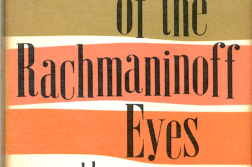IN 1970’S NEW YORK, Julius Eastman was an outrageous presence in the avant-garde performance scene as a composer, singer, and pianist. Black and openly gay, he was an outsider. He died homeless and forgotten in 1990. As the music world grapples with righting the canon, there is a resurgence of interest in this sui generis artist.
Eastman was nominated for a Grammy in 1974 for his recording of Peter Maxwell Davies’ Eight Songs for a Mad King. In 1975, as a member of the experimental S.E.M. music ensemble, Eastman tackled John Cage’s koan-like instructions for “Solo for Voice No. 8,” which read: “In a situation provided with maximum amplification (no feedback), perform a disciplined action, with any interruptions, fulfilling in whole, or in part, an obligation to others.” Eastman played his own queerness as an instrument in the performance. A Black woman and a white man were invited onstage to strip while Eastman ranted and camped it up as ensemble musicians improvised an electronic soundscape. A review in the Buffalo Evening News stated: “Eastman’s leering, libidinous, lecture-performance had everyone convulsed with the burlesque broadness of his homoerotic satire.”
I first became aware of Eastman as a performer in Meredith Monk’s Dolmen Music (1979). In a recent conversation, Monk fondly remembered him as “full of contradictions, but so intelligent with an essential love and devotion to music itself.” She enjoyed working with him on Dolmen Music, doubling up on the falsetto and lower parts. He played keyboards during the development of a second piece, Turtle Dreams (1981), but then did not want to go on tour. As a colleague, “he was so supportive of my music and taught me a lot about theory and harmony,” she said.
Eastman’s own compositions challenged prevailing æsthetic norms that were very straight, very white, and very male. Eastman told The Buffalo Times in 1976 that he aspired “to be what I am to the fullest: Black to the fullest, a musician to the fullest, and a homosexual to the fullest.” Classically trained in voice and composition at the Curtis Institute of Music, his music was structurally proto-minimalist, frequently using multiple grand pianos awash in overtones. He called it “organic music.” While his titles were sometimes provocative—Crazy Nigger (1978), Gay Guerilla (1979), and Nigger Faggot (1978) among them—the music itself was transcendent. He conducted his 1974 symphony Femenine wearing a dress. Vocal and piano scores as well as disco recordings round out his genre-fluid œuvre.

Choreographers loved his music. Andy de Groat collaborated with him on gravy, a medicine of spaces (1981) at The Kitchen, and Molissa Fenley commissioned him to create a score for two sections of her Geologic Moments (1986), which were performed at the Brooklyn Academy of Music. She told me: “Working with Julius was always surprising. I often had to telephone his brother to find him for rehearsals.” Backstage he would be fast asleep in his dressing room. “He was very sick at the time, but once on stage, he’d be unbelievable, brilliant, completely obsessed. People loved him.”
He eventually disappeared from Manhattan and died destitute in a Buffalo hospital in 1990 at the age of 49. An obituary was published in The Village Voice eight months later, but until then people didn’t know whether he was dead or alive. His legacy languished in limbo until composer Mary Jane Leach and other colleagues published a book of essays, Gay Guerrilla: Julius Eastman and His Music, in 2015. Fragments of scores were reconstructed, aided by tapes of early performances, and that jumpstarted a resurgence of performance, first in alternative spaces and then by the Los Angeles Philharmonic and the Orchestra of St. Luke’s.
American Modern Opera Company guest-curated some of his music at the June 2022 Ojai Music Festival in Southern California. In a pre-festival online conversation, a member of the company, bass-baritone Davón Tines, who is Black and gay, left the audience with a provocation: “I would love for you to hold the question: Why was someone like Julius Eastman neglected?”
The contemporary music collective Wild Up has also been championing Eastman’s compositions, committing to a seven-part anthology on New Amsterdam Records. Last year, they released Julius Eastman Vol. 1: Femenine, which was hailed as a “masterpiece” by The New York Times. NPR placed it among the top ten records of 2021. The propulsive seventy-minute symphony, built on circular phrasing and expanding repetitions, generates an ecstatically immersive experience of cascading lyricism. The ensemble performed Femenine at Los Angeles’ Broad Museum last summer.
In June, Wild Up released Julius Eastman Vol. 2: Joy Boy. His idiosyncratic compositional style—open-ended scores that interweave multiple genres and whose instrumentation is not always specified—is lovingly realized by artists whose backgrounds encompass classical, jazz, and improvisational music. Exuberance abounds throughout this recording. The title track features a never-before-recorded song, “Joy Boy,” a buoyantly discordant introduction followed by the trippy, undulating “Buddha (Field).” Two radically different versions of “Touch Him When” showcase the virtuosic players veering from placid minimalism to metallic drones. The record culminates with “Stay On It,” a dance-inflected harmonic convergence of incantatory rapture within a cacophony of chaotic sounds.
Artistic director of Wild Up Chris Rountree writes in press material that he wants listeners “to find themselves in these pieces. And in their multiple iterations. We want this work to be quintessentially queer. Every moment full of choice.” Julius Eastman, the fierce, Black, gay iconoclast, consigned to oblivion in his day, is finally being celebrated for his musical genius and the sheer audacity of his compositions. Brava diva!
John R. Killacky, a longtime contributor to this magazine, is the author of “because art: commentary, critique, & conversation” (Onion River Press).





